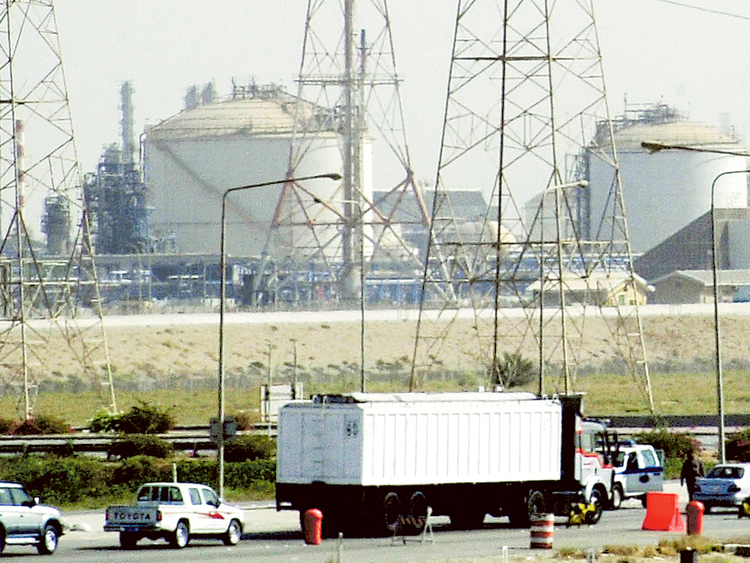The widely reported fall in Saudi Arabia’s crude oil exports in May — the first time in five months — led many to assume that this may counter the fall in crude oil prices.
This is not the case. To start with, the fall in Saudi Arabia’s crude oil exports was reported by Saudi Arabia itself to the Joint Oil Data Initiative (JODI), a global organisation that includes Opec, IEA and many other energy organisations and individual nations.
The fall in crude exports hides the rise in domestic refining and product exports in addition to the seasonal rise in direct crude oil burn for power generation.
While Saudi Arabia’s production in May stood at 10.333 million barrels a day (mbd) slightly higher than April’s, its exports were 6.935 mbd, down from 7.737 mbd a month earlier, domestic refineries ran 2.4 mbd, up from 2.2 mbd in April and 20 per cent above a year earlier.
Direct crude oil burn rose to 0.677 mbd in May from 0.358 mbd. The difference went into domestic stocks as Saudi Arabia’s huge system perhaps needs a bigger buffer than the current 300 million barrels spread all over the fields, terminals and refineries, to counter changes in domestic refinery runs, rough weather at the loading ports and other eventualities.
Reuters reported that “Analysts said the Saudi build-up most likely reflects the changing domestic oil market, not a global imbalance.”
The downturn in Chinese refineries in May for maintenance may have been a factor in declining exports, but the Saudis are most likely to make up in the higher demand season of the third quarter.
With the advent of new and large refineries, the country’s capacity is now over 2.9 mbd and is becoming a large exporter of products to international markets at a time when refinery margins are reported to be good. As a company, Aramco ranks fourth in the world in refining capacity jointly with Shell.
Subsidised prices
In its Country Analysis Report, the American Energy Information Administration (EIA) said, “Saudi Arabia is the largest oil-consuming nation in the Middle East. Saudi Arabia consumed 2.9 million barrels per day of oil in 2013, almost double the consumption in 2000, because of strong industrial growth and subsidised prices.”
One important contributor to Saudi oil demand is the direct crude oil burn for power generation. There is not just enough fuel oil and natural gas to meet the demand and hence the resorting to crude oil.
In the period 2009-13, the average daily use of crude oil for this purpose was about 0.5 mbd, where the January consumption of about 0.3 mbd rises steadily to about 0.7 mbd between June to September. The peak is usually around 0.9 mbd during August.
But in July 2014 crude burns were 0.9 mbd, the highest ever reported, according to EIA, and this year if the current trend goes on, we may even pass the historical numbers not only due to higher temperatures but because of rising electricity demand where “net electricity consumption has more than doubled since 2000, reaching an estimated 232 billion kilowatt-hours (kWh) in 2012” and rising.
Power generation capacity is expected to rise from 58GW to 120GW by 2032.
Surely Saudi Arabia cannot go on burning rising crude oil volumes for power generation. In spite of the fifth largest natural gas reserves in the world, it does not produce sufficient gas for power generation and for its vast petrochemical industry.
Reducing crude burn
Its dry natural gas production and consumption was 3.6 trillion cubic feet in 2013 where more than 70 per cent is associated gas from crude oil production. Efforts to increase natural gas from free gasfields were successful but just not sufficient.
More effort is needed to reduce gas flaring where “the World Bank Global Gas Flaring Reduction partnership estimates that in 2011, Saudi Arabia lost 131 billion cubic feet (bcf) of gas production to flaring”.
The Wasit Gas Programme is to develop two offshore gasfields of a combined capacity of 2.5 bcf a day which will go a long way in reducing crude burn and feeding other industries.
Because of the implication of rising crude burns and even fuel oil in addition to the limitations of natural gas production, Saudi Arabia is proceeding with “plans to add 41GW of solar power, 18GW of nuclear power, and 4GW from other renewable sources to expand electricity supply” in addition to its attempts to improve energy efficiency.
But the question remains why Saudi Arabia never considered gas imports at least until other resources materialise and to make sure of saving so much liquid fuel for export that may generate far more revenue than the cost of gas?
The writer is former head of the Energy Studies Department at the Opec Secretariat in Vienna.













